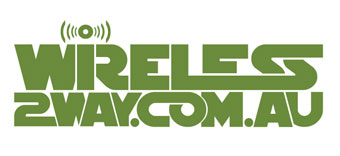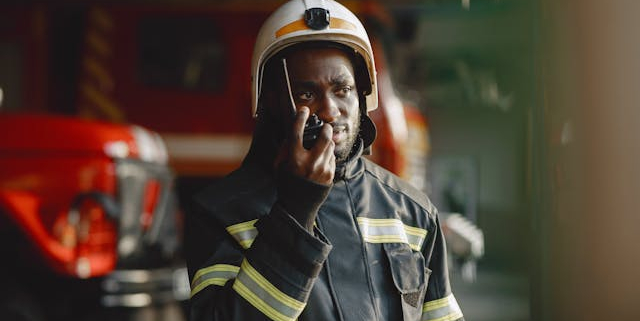How Two-Way Radios Ensure Safety in High-Risk Industries
High-risk industries require constant communication to avoid accidents or to take immediate action in case of emergencies. Two-way radios are workers’ weapons in high-risk environments as they can help them to stay connected, alert each other, track the location of at-risk individuals, and much more.
In this blog, we will discuss how two-way radios can enhance safety in high-risk environments through their powerful and efficient features.
Essential Features of Two-Way Radios for High-Risk Industries
People working in high-risk environments, including construction sites, chemical factories, mining operations, or manufacturing plants, can often be exposed to unfortunate situations. Two-way radios can be their salvation, whether someone is stuck in an isolated area or trying their best in firefighting and rescue operations. But how? Let’s explore a few features of two-way radios for emergencies to ensure safety in high-danger zones.
1. Emergency Alerts – Man Down & Lone Worker
A key feature of two-way radios is to notify peers immediately in emergencies. There is not enough time to type a text, so one can send the immediate alert and seek help using this one-touch feature. Two-way radios for risky environments are also equipped with;
Man Down Feature: It has motion sensors to detect if a worker has fallen off a place or has lost consciousness. If it tracks no movements for a certain period, it sends the automatic signal to other assigned team members for instant help.
Lone Worker Feature: As its name indicates, this feature is thoroughly helpful for individuals working in lone or isolated areas. They have to respond to a system’s check-in time-to-time, and if they don’t get to it in time, the system sends an automatic signal to the designated members for help.
2. Works Without Network
It’s not a cell phone but a two-way radio, hence not dependent upon any cellular network. This no-reliance feature on towers, two-way radios, is ideal to count on in safety-critical areas. One can take them in a no-network area, in bad weather conditions, or where the network is poor. Having a full-time communication tool within arm’s reach is a vital asset.
3. Real-Time Location Tracking
A supervisor gets to know where the team workers are and if they are keeping safe. It improves operational efficiency and the well-being of the site labourers. If a worker enters a heavy risk zone, this feature can send a real-time alert to the supervisor, and they can take appropriate measures. It’s an effective way to set a virtual limit to ensure the safety of everyone working on the site.
4. Push-to-Talk
Push-to-talk or PTT feature enables communication with a single press of a button. No dialling, no waiting for the call to connect, or no long texting, this two-way radio feature allows workers to hold a PTT button to talk and let go to listen. No, it’s not a walkie-talkie, though it seems very similar. This feature is helpful in high-risk environments like healthcare, where anything can trigger an emergency and require quick support.
5. One-Button Texting
An emergency has no scope for writing long or explanatory texts. This one-button text message feature allows workers to send a pre-programmed text with a single button press. It saves time, makes asking for help easier, and is convenient in loud environments. Imagine a worker stuck at a place with noise or a natural disaster, this feature could be their lifesaver.
6. LED Battery Gauge
Urgent scenario and low battery sounds like a terrible combination. Not knowing about the low battery makes the bad situation worse. Two-way radios for construction sites and other high-risk industries are featured with an LED battery gauge to display the battery count using LED lights. Users can track their battery status, save or recharge it accordingly, using intelligent and fast two-way radio battery chargers.
7. Loud & Clear Audio
Some high-risk environments can be noisy too, like rescue operations, but the need to communicate is no less. Two-way radios for high-risk industries are manufactured with loud and clear voice systems that enable voice clarity, reducing miscommunication. This helps workers to stay focused, coordinate with assigned workers instantly, and take immediate action to take control of the situation.
Wireless 2-Way Two Way Radios for High-Risk Environments
Wireless 2-Way offers you a broad range of two-way radios for high-risk environments where every second counts. They are perfectly equipped with essential safety features like SOS alerts, GPS tracking, clear audio, and enhanced encryption for uninterrupted, reliable communication. Wireless 2-Way ensures both the victim’s and the saviour’s safety and makes no hole in your pocket.

Source: Freepik
Compliant with U.S. Military Standards 810 C/D/E/F
You can find two-way radios compliant with U.S. Military Standards 810 C/D/E/F on Wireless 2-Way. This means made to ensure the most critical conditions, such as high heat, heavy rains, shock, or vibration. Engineered for tough operational environments, these two-way radios can work well for various industries like manufacturing, mining, and fire and rescue. You can either buy or rent at affordable rates and ensure protection for your team any day.
End Note
Understanding the key benefits of two-way radios can help you make a sensible and informed decision according to your conditions and requirements. In critical environments, communication is more than a necessity, it’s a safety lifeline. We need equipment that doesn’t let us down. Two-way radios for high-risk industries can help tackle sensitive situations, avoid unwanted scenarios, or prevent a mishap with a worker.



